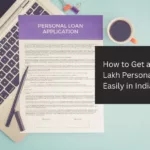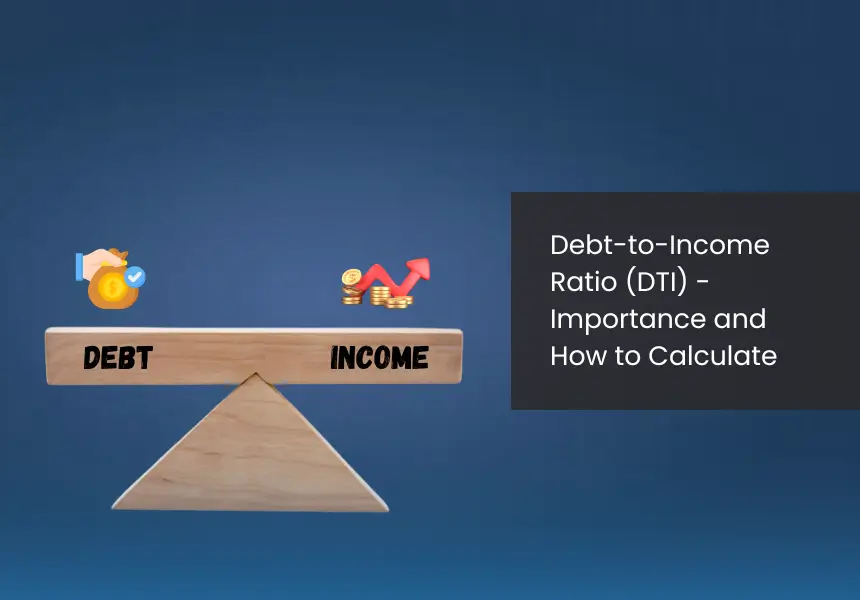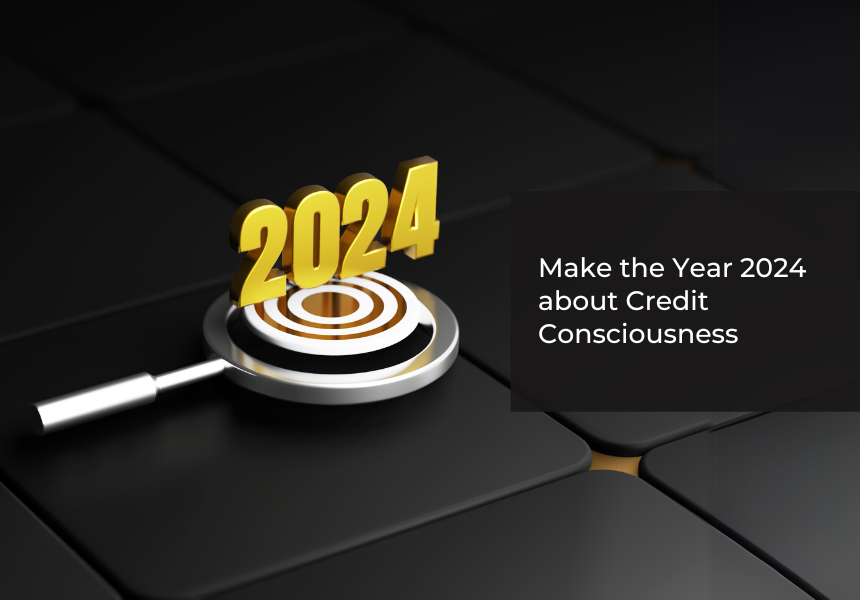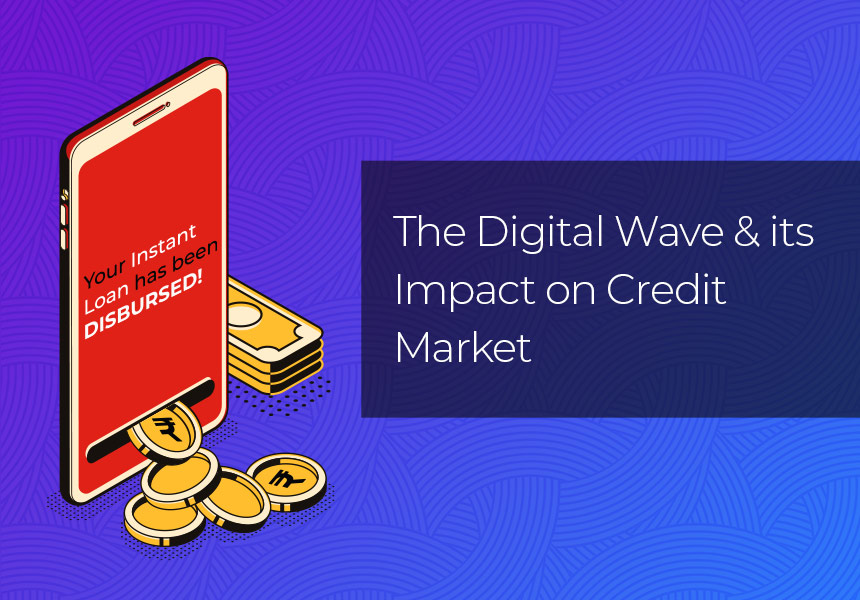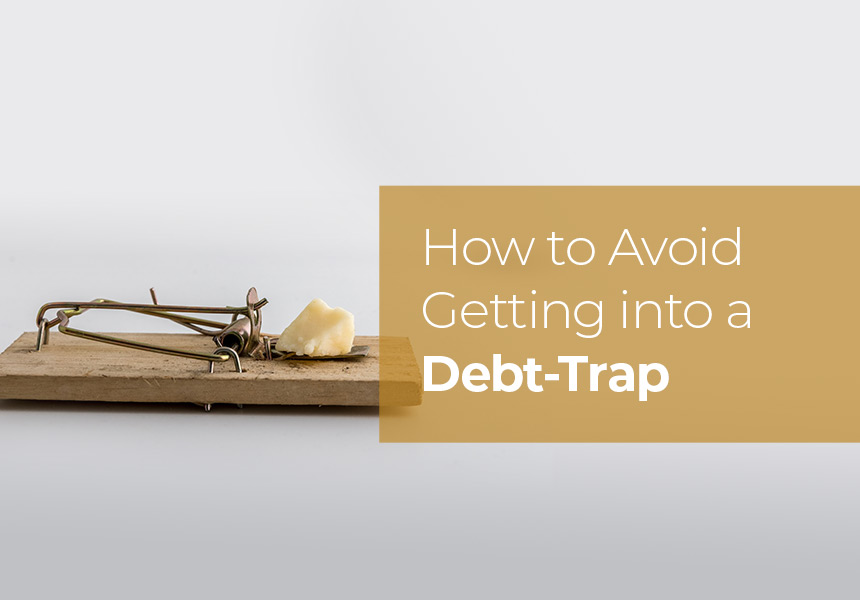
Financial discipline is something that all of us need to learn as grown-ups, especially once we start making our own money and take financial decisions. Learning how to manage credit card and other debts is also a big part of being financially independent and responsible.
If you hold a credit card and/or have taken a personal loan, it is crucial to remain on top of the payments and be aware of how much you need to set aside each month to pay off your debt. Failing to do this can lead you into a debt trap where you probably end up making minimum payments on your credit card which don’t even begin to cover your debt. Debt can weave a vicious trap that can be difficult to escape.
How and When do you get into a Debt Trap?
Availing credit or taking a personal loan can be a good idea under certain circumstances; however, borrowing money is a big responsibility that warrants a strict check on your spending and saving patterns. In some cases, however, a series of unforeseen financially demanding situations end up trapping you in a debt cycle.
For instance, you want to purchase a new phone. Say your salary is ₹30000 per month. You decide to buy a phone worth ₹60000. Your salary and savings do not permit you to splurge on such expensive phone, but your credit card gives you an EMI option for the same. You are tempted and you make the purchase. The following month you have a medical emergency, and you are unable to pay the EMI on the credit card. The amount gets accumulated along with interest. This circle of the interest and late payment fees thus begins.
What are the Signs of a Debt Trap?
- When your EMIs start growing alarmingly, you know that you are marching towards a debt trap. This shows that you do not have control over unnecessary expenses.
At the time of opting for an EMI, the amount would’ve seemed small, but when you sum up the credit card bills and loan EMIs (from multiple loans), the total could be an unmanageable amount of money. - When your fixed obligation-to-income ratio (FOIR) exceeds 70%, be alert. The FOIR is the ratio of your income to fixed expenses, such as house rent, school fees or monthly bills. It is very important that you watch your fixed expenses.
If you opt for a loan or credit card, it will fall under fixed obligation for the period of the loan tenure. If you are needing to borrow money to meet your fixed expenses, you have fallen into a debt trap because you are spending more than your income. - When you are borrowing money to pay the existing loan or debt, it’s a sign of heading towards a debt trap. This usually holds true for personal loans or credit card payments. People usually tend to fall into unwanted traps on these forms of debt.
- Falling back on credit card payments is a huge red flag. Many people resort to credit cards thinking that paying just the minimum amount due will suffice. They do not understand the implication it will have on their financial history. You tend to pile up on interest and additional costs such as late payment fees.
Withdrawing cash using your credit card is another bad idea. It invites cash advance fees and interest rates that may go as high as 50%. - Defaulting on repayment of any debt is a sign of financial struggle and should be treated at the right time. If no timely measure is taken, it could only get you into more financial trouble.
- If your loan application gets rejected, know that one of the reasons could be that either your credit history or your credit score is poor. This could be due to multiple reasons. One of them is that you have too many active loans.
Thus, be careful and borrow only when you require it the most or first pay off the existing loans and then apply for a new one.
How to Avoid Falling into Debt traps?
There are various ways in which you can avoid a debt trap. The right kind of financial planning and management can get you there. Let us look at some precautions you can take in order to avoid falling into a debt trap.
Prepare a Budget
Before you borrow, chalk out a budget. This will help you decide whether you have the margin for additional fixed expenses. Your EMI should not exceed more than 50% of your income. Also, your FOIR should not exceed 70%. You must think of additional loans only after considering these two factors.
Read More : Top Budgeting Tips For 2020
Debt Consolidation
It is a financial tactic wherein you merge multiple loans, credit card debt, and/or other outstanding payments. You then use a single loan to repay this consolidated debt. There are several ways in which you can consolidate your debts. One option is to opt for credit card takeover loan. These are specifically designed to rescue people buried under credit card debts. This is a kind of personal loan that will help you settle your credit card dues. The advantage of taking this loan is that the interest rates on this loan are lower than the credit card interest rates.
The second option is to get a personal loan for debt consolidation at a fixed rate or a lower interest rate if compounded and pay off all your outstanding debts in one go. You can then pay off the loan in instalments over a fixed period.
Read more in our : Guide To Debt Consolidation in India
EMI Free Loans
Rather than opting for high interest loans where you have a huge chunk going toward EMI payments, apply for EMI free loans. These are a kind of personal loan in which you pay only interest on total loan amount every month. The principal amount remains unchanged until you make a bullet payment.
Once the bullet payment is made, the total outstanding loan amount reduces, and fresh interest is calculated on the revised loan amount. This loan provides you the flexibility to increase/decrease your principal repayment amount. The tenure of these loans is longer than that for credit card or other short-term loans.
Avoid Shopping on EMIs
Retail brands are always running schemes like zero interest EMI round the year to attract consumers. Avoid falling into such tactics unless you really need to make this purchase. A lot of such purchases, especially unnecessary ones, will set you back financially because a lot of your monthly income going toward these EMIs.
Walking into a debt trap is easy but getting out of it is extremely difficult. It will require change in spending habits. Therefore, be disciplined while spending or borrowing. Know when to take a backseat because – Precaution is always better than cure.
References
- How to get out of the Debt Trap – CIBIL Connect
- How to avoid the debt trap – TheNewsMinute




